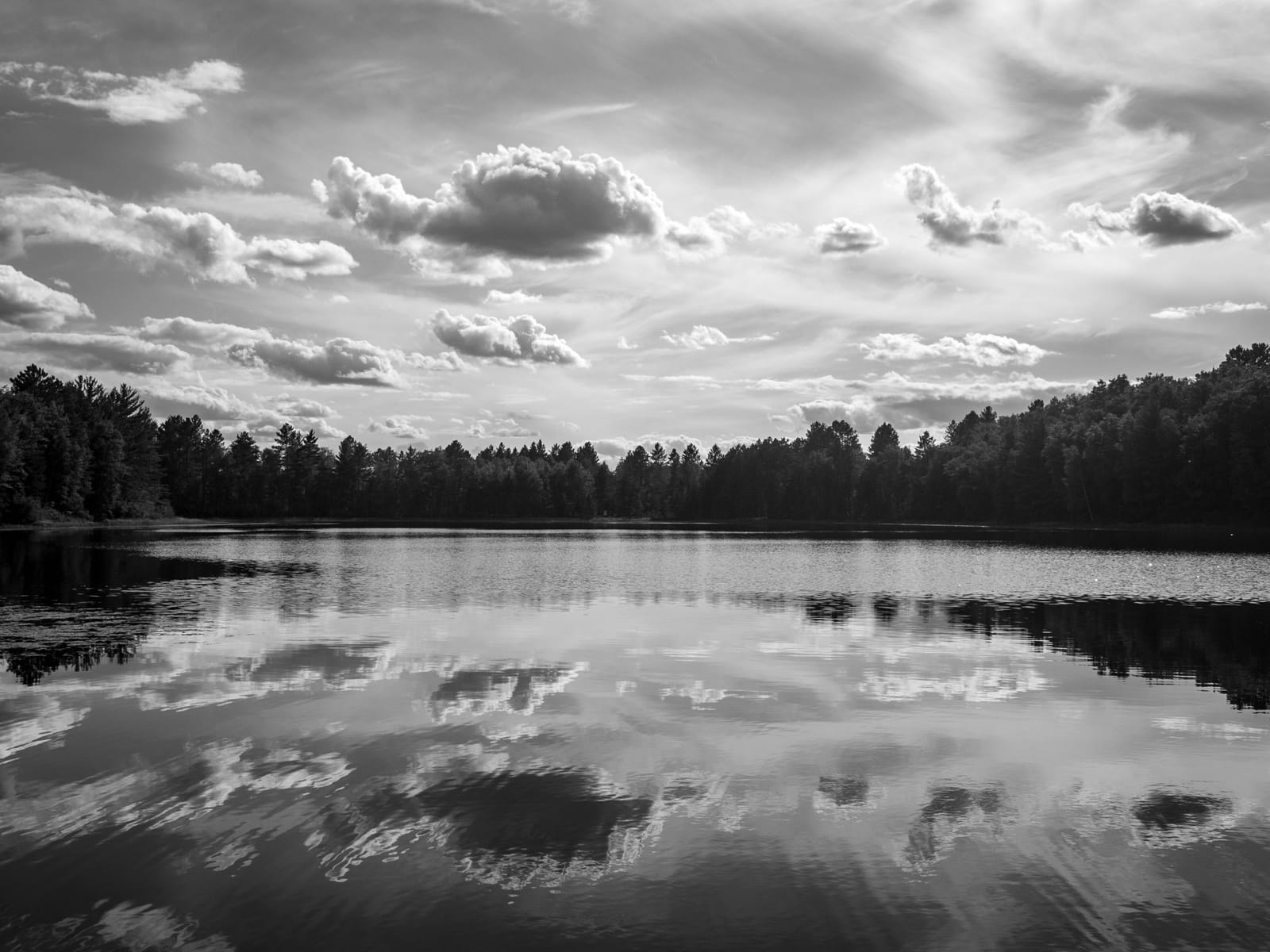Crossing the 45th parallel always gives me a thrill. Whenever I see the green federal sign that marks the occasion, I instinctively hit the brakes and snap a photo that comes out blurry and gets deleted. The 45th parallel is the halfway point between the equator and the North Pole, and you can feel the geography shift when you see all that big pine and cold water. I’ve often crossed this line while speeding towards Michigan’s upper peninsula on an empty road in the dark.
Lake Superior frightened me when I was small. My parents enjoyed camping along its shore on long weekends, and I’d doze on the sticky pleather backseat of our Pontiac while we drove from Detroit to Marquette. I remember squirming in my pup tent, unable to sleep with that mysterious lake sitting out there in the night like it was waiting for something. In second grade, we studied the Great Lakes and read a pamphlet that described Lake Superior as the deepest and coldest of the five lakes: Scientists have not yet reached the bottom of Lake Superior, and they do not know what lives there. I studied that sentence until it became a hymn, and I’d lie awake chanting it in my head while thinking about what might live in all that uncharted space.
There’s enough water in Lake Superior to submerge all of the Americas. Its southern edge is known as “the Graveyard of the Great Lakes” due to a cascade of shipwrecks. On July 30, 1985, Jeffrey Val Klump became the first person to reach the bottom of Lake Superior at 1333 feet. This must have occurred after I read that pamphlet. Over the years, I’ve made my peace with Lake Superior. Antarctica scares me today. My head goes swimmy if I look at it for too long on a map. All that blank land feels like leaping off a rooftop. Maybe this is why I’m drawn to signs that clearly position me on the planet: the 45th parallel, the Continental Divide, and my telephone’s pulsing blue dot that accompanies me wherever I go.





